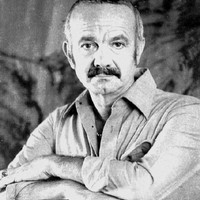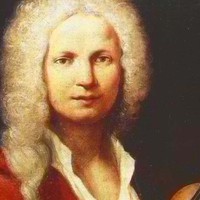The Four Seasons

Sponsored By
- April 23, 2016


Sponsored By


Astor Piazzolla merged Argentinean popular music and 20th-century classical styles to spearhead the revolutionary movement known as “new tango.” Born in Argentina, Piazzolla spent much of his childhood in New York. At age eight, he took up the bandoneón, a South American folk instrument in the accordion family. He moved back to Argentina as a teenager and joined traditional tango orchestras, soon establishing a career in Buenos Aires. Besides performing in dance bands and arranging songs for the large ensembles, Piazzolla also pursued a separate path composing concert music. Like many aspiring composers of his generation, he found his way to the legendary teacher Nadia Boulanger in Paris, who encouraged him to drop his Igor Stravinsky/Béla Bartók/Maurice Ravel approximations and embrace his true voice in tango.
Before long, Piazzolla assembled the group that would be the platform for most of his groundbreaking work. The Quinteto Nuevo Tango (New Tango Quintet) featured Piazzolla on bandoneón, plus violin, bass, piano and electric guitar. It was for this group that Piazzolla wrote his Quatros Estaciones Porteñas (Four Seasons of Buenos Aires) between 1964 and 1970. As with many of his small-group compositions, the Four Seasons have been reshaped by various arrangers for classical ensembles. The version for solo violin with strings, arranged by Russian composer Leonid Desyatnikov, stands as an impassioned response to Antonio Vivaldi’s most famous violin concertos, the “Four Seasons.” The percussive, dancing origins of Piazzolla’s music are on display throughout, and Desyatnikov’s arrangement makes ample use of the string ensemble’s extended techniques and unconventional sound effects to carry the rhythmic drive of the music.
Aaron Grad ©2025

With a cushy job in his native Venice teaching violin at a well-endowed school for orphaned girls (many of whom were really the illegitimate offspring of aristocrats), Antonio Vivaldi was able to use his talented students to test out and refine his compositions, especially his hundreds of concertos. In 1725, Vivaldi’s publisher in Amsterdam released a set of twelve of those violin concertos under the title Il cimento dell’armonia e dell’invenzione (The Contest Between Harmony and Invention). Vivaldi named the first four concertos after the seasons, and he organized the musical ideas to correspond to descriptive sonnets. These interrelated works that we know simply as The Four Seasons live on as the crown jewels within Vivaldi’s incomparable catalog of solo concertos.
The sonnets offered Vivaldi ample opportunities for word painting, as in the “birds in joyous song” in the first movement of Spring, represented by trilling violin motives, countered later by thunder and lightning. The docile slow movement depicts a goatherd napping in a meadow, with the violas assigned the part of his barking dog. The finale introduces nymphs and shepherds dancing to bagpipes, a sound evoked in the droning accompaniments.
Summer brings the “heat of the burning sun,” matched by wilting musical figures. The soloist enters in the style of a cuckoo, with the distinctive two-note call embedded within constant bow-strokes. The arrival of a stiff wind from the north, bringing a squall, sends the movement into an agitated state. The slow movement depicts another nap, this one interrupted by the nuisance of gnats and flies and occasional peals of thunder. The finale unleashes the full force of the summer storm, the lines cascading down like sheets of rain.
Autumn begins with peasants dancing and drinking in celebration of the harvest, until they all settle into an inebriated slumber. The slow movement descends into the soundest sleep yet, with the soloist joining the muted strings in slow-moving phrases, leaving only the harpsichord to decorate the harmonies with ad libitum arpeggios. The finale wakes for a hunt, complete with imitations of hunting horns and barking dogs.
Winter paints a scene of desolate cold and chattering teeth. The slow movement moves the scene to a cozy fire inside, while pizzicato raindrops continue to fall outside. Starting with hesitant, slippery steps on the ice, the finale builds to raging gusts of wind.
Aaron Grad ©2024
Get driving directions and find nearby parking.
Find dining options close to the venue.
View seating charts to find out where you'll be seating.
Get driving directions and find nearby parking.
Find dining options close to the venue.
View seating charts to find out where you'll be seating.
